Author Archives: vlm
A Message Regarding COVID-19 (Coronavirus)

We at Westmoreland Vesper and Quattrone want to assure all clients that we have remained open to address your legal needs while addressing the safety and concerns of the coronavirus situation.
We want to assure you that our attorneys and staff are following the recommendations of the CDC and other federal and state authorities to ensure that clients and visitors are protected from the potential spread of this virus.
Our office remains open during this time. We will continue to answer phone calls and emails with our usual promptness while at the same time delivering timely legal services to our clients. While some of our staff may work remotely at times, we will continue to service our clients without interruption or change in the quality of work that we are known for.
It remains our priority to address our clients’ legal matters while at the same time protecting the health and well-being of all employees and visitors to our office. If you have any questions or if we can assist you in any way please contact us at 609-645-1111.
Justice for Father Who Died in Police Custody
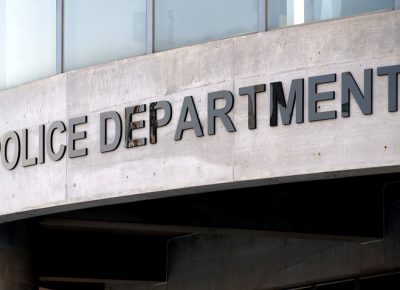
Westmoreland Vesper & Quattrone recently acquired a settlement for the family of a father who died in police custody. The hard reality in life is that awful things happen. When they do, it is our goal to bring justice to every scenario. In this situation, a father was arrested after not paying child support, a result of losing his job two years prior. He was brought into the Atlantic City Police Department and was inebriated at the time. The procedure requires that inmates receive face to face monitoring at least every 30 minutes, and every 15 minutes if the inmate has been drinking alcohol. The police department failed to properly monitor the inmate, missing 7 consecutive checks despite their reports that checks were done. Video footage revealed that the man had been vomiting while in the cell, and rolled onto the floor from his bed. He laid for 58 minutes before anyone came to check on him and call for help. He died as a result of a bleeding ulcer, which could have been addressed and treated had the appropriate checks been done. Prior to losing his job, this man-made regular financial contributions towards child support. He is survived by three sons; one adult, one 14 years old, and one 15 years old.
Westmoreland Vesper & Quattrone was able to settle this case the day before trial, without extending the suffering of this man’s family. The settlement was $390,000 for the loss of guidance and advice suffered by the man’s teenage sons.
While there is no “fix” for these awful scenarios, we believe these families deserve some kind of justice, and we are here to make sure that happens. We are on your side, and ready to fight for you and your family. You’ll want us in your corner.
3 Tips for Safe Winter Driving
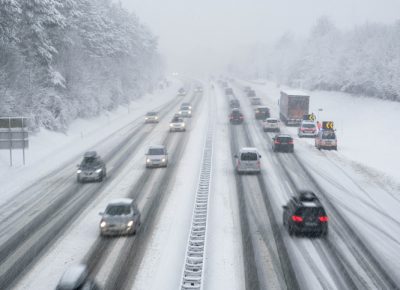
Let’s look at some tips for safe winter driving. Whether or not we’d like to admit it, winter weather is upon us. When the temperature drops, we see an increase in risky driving conditions. While many of us would like to avoid the winter roads altogether, the reality is that our lives don’t stop when the weather is less than ideal.
Luckily, you can prepare ahead of time for such driving conditions. Let’s take a look at the three top tips for staying safe in winter weather!
3. Prepare your Vehicle! for Winter Driving
Making sure your car is prepared for anything Mother Nature throws its way is very important. This can be done in many different ways.
Stock your car. Make sure it’s well-equipped with anything you might need in an emergency. Food, water, a flashlight, a blanket, a glass scraper; these and more are practical items you might need somewhere along the line.
Check your tires! Did you know that your tire pressure can fluctuate with the rise and fall of temperature? Keep an eye on it and add some air as needed. Also, be sure you have plenty of tread to see you through the winter months. If not, consider replacing those tires for the safest ride.Fill the tank. If a winter storm hits, traffic is bound to get messy. The last thing you want is to get stuck on the highway with an empty tank. Make sure you always leave at least a half tank in there in case of an emergency.
Check your brakes. Winter is a great time for some routine maintenance on your brakes and brake pads. Make sure they’re operating at the top of their game!
2. Review your cold-weather driving tactics.
There are some go-to rules when it comes to driving in winter weather. Most especially in the snow. It never hurts to review your knowledge so you can be a confident driver when the storm hits.
Slow. Down. Snow and ice means less traction. Take your foot off the gas a bit to ensure the safety of yourself and those around you. You’ll get there in good time!
Add some distance between cars. It takes longer for your car to slow down when roads are slick, so you want to make sure to account for that time difference when it comes to the car in front of you. Give yourself extra space.
When in the thick of a storm, remember to allow inertia to help you out. Try and slowly roll rather than coming to a complete stop, watch how much gas you give it on hills, and make sure you don’t stop while climbing a hill!
1. Check your coverage!
Accidents happen, and we often represent clients who were unaware of their limited coverage only to find out the hard way. This does not have to be you!
Westmoreland Vesper & Quattrone has your back. We offer a review of your insurance coverage and can let you know where adjustments need to be made. We make a point to help you understand your auto insurance coverage and, if necessary, make coverage suggestions. This service is free of charge, so the peace of mind is a no-brainer.
Click here for a free attorney review of your auto insurance policy, and know for sure: Does your auto insurance policy have you covered? We’ll answer that question for you and your specific situation.
If you or someone you know are already searching for South Jersey accident attorneys, call us today at 609-645-1111 for a free consultation.
Amusement Ride Injuries

Most people think that when an amusement ride injury occurs, it is usually fatal or catastrophic, but that is not always the case. While the media gravitates toward those type of amusement park ride accidents because it makes for a good story, most ride injuries are non-fatal.
A 2014 study in the LA Times stated that dizziness, nausea and fainting were the most common ride injuries. These injuries account for almost 1 out of 5 amusement ride injuries. The study also pointed to the fact that injuries occur far more often on older amusement park rides than on newer ones. Generally, people suffer from head, neck and back injuries because of the motion of the rides like fast turns and drops. Injuries at amusement parks can be the result of roller coaster accidents, rides like Ferris wheels or swinging rides that malfunction, water rides and slides and wave pools.
Serious amusement ride injuries that can occur are:
- Deadly falls
- Traumatic brain injury
- Strokes and heart attacks
- Brain aneurysms
- Paralysis
- Drowning
- Lacerations
- Broken bones and torn ligaments
If you or a loved one has been injured on an amusement park ride, it is important to contact an experienced personal injury attorney to discuss the extent of your injuries. Your attorney will work with you to determine all liable parties in order to get you the compensation that you deserve. Call today for a free and confidential consultation. We can help!
Things to Consider Regarding Your Swimming Pool Liability

Let’s look at swimming pool liability and what you can do to reduce it. If you have a pool in your backyard, it is great for entertaining guests and beating the heat, but it also increases your personal liability. When you have guests over and an accident happens in your pool, you could be at risk for a personal injury lawsuit.
To reduce your swimming pool liability, here are a few things to keep in mind:
Build a Fence. In most townships and counties, private swimming pools require a fence. If your township or county does not require, your pool should be enclosed with a fence, especially one that is difficult for children or others to climb.
A fence is necessary to reduce the risk of injury or accidental drowning. Your fence should also include:
Gates that automatically shut. A spring-loaded gate will close on its own, so you don’t have to worry about someone accidentally leaving it open allowing a small child to wander unattended into the pool area.
Latches that are childproof. When you install latches, place them on the inside of the fence near the top, so that children cannot gain access to them without an adult.
See-through panels. Most people install fences for privacy, but when you have a pool, being able to see your pool from the house or other parts of your property allows you to know if anyone is near the pool unattended.
Pool covers. Investing in a complete pool cover not only cuts down on maintenance but will help prevent accidental drownings. Install a pool cover that can be attached to the side of the pool deck, making it taut and impenetrable.
Train household members in CPR and basic first aid. All members of your household should be trained in CPR and basic first aid. Drowning is not the only risk associated with pools, there are also head injuries, scrapes, cuts and limb injuries due to pool drains.
Clean up and store pool toys when not in use. When your pool is not in use, it is important to put away all pool floats and toys, so that children are not tempted to use them.
Homeowner’s Insurance. Your homeowner’s insurance should include coverage for any potential accidents associated with the pool. A $1 million umbrella policy in addition to your homeowner policy is the recommended minimum.
At Westmoreland Vesper & Quattrone, we specialize in personal injury, wrongful death and commercial litigation. We have a long history of service to the local community dating back over 50 years. To date we have recovered well over $250,000,000 in compensation of damages for our clients and their families. For a free, confidential consultation, give us a call today at 609-645-1111.
Understanding Premises Liability
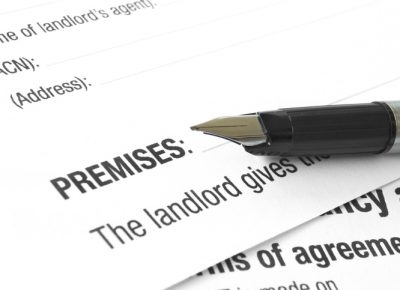
Property owners have a responsibility to maintain their properties so that people who come on or into their properties, don’t suffer an injury. Premises liability holds property owners responsible for injuries that occur on their properties.
Premises liability claims arise from a dangerous condition on the property which results in slip, trips and falls to causing injuries. The way liability is determined can often be complicated and it depends upon the status of the injured visitor & the condition of the property.
Understanding Premises Liability: Legal Status of Visitor
Regarding the status of the visitor, there are different labels that the law will apply to the injured: invitee, social guest, licensee, or trespasser. Case law requires the property owner to make his property safe for all foreseeable occupants, however, a greater duty applies to those who are invited. The categories of occupants are:
- Invitee– a person who is invited onto the property, for example, a customer into a place of business.
- Licensee–someone who enters for his own purpose (like a contractor or inspector), or as a guest and has been given consent by the owner.
- Social guest–a welcomed visitor the property
- Trespasser– Someone who is on the property without permission.
Understanding Premises Liability: Condition of the Property
Except for trespassers, there is a uniform standard of care that requires the exercise of reasonable care for the safety of any visitor to the property. Determining the standard of reasonableness depends on a number of factors:
- Circumstances under the property were entered
- The way the property is being used;
- If the accident or injury was foreseeable; or
- Whether the owner attempted to repair or warn visitors of a potentially hazardous situation.
Understanding Premises Liability: Children on Property
With regard to children who aren’t permitted to be on the property by the owner, owners must give consideration to the “attractive nuisance” doctrine. This means that a property owner must give reasonable warning if something on the property could cause serious injury or death.
The attorneys at Westmoreland Vesper & Quattrone have a reputation for successfully representing people who have been victims of general negligence accidents. We have the knowledge and experience to make sure that you are compensated fully and fairly.
If you or a family member has been injured due to the negligence of others, please call us at 609-654-1111 to learn more.
10 Steps to Responsible Driving

Let’s look at ways to improve your responsible driving habits. Since you cannot control the actions of other road users, you must rely on your own driving skills and experience. Following these ten rules ensures that your driving is safe and courteous to all who share the road with you.
- Plan Your Route: Know where you’re going ahead of time. Tune into a local media source to be well informed about weather and road conditions or traffic activity on your route. Then you can avoid delays or allow extra drive time. For longer trips, include a rest stop every two hours. Stop sooner if you are tired.
- Maintain Your Vehicle: Read your vehicle’s owner’s manual and follow the recommended schedule for maintenance service. Conduct your own routine check-ups on: tires, brakes, lights, wipers, and fluid levels. For good visibility make sure your mirrors, windows and outside lights are clean. Secure any loose items or cargo that could become a hazard.
- Focus Your Attention: Being a safe driver means being both physically and mentally prepared to drive. Being well rested, alert and attentive enables you to respond quickly when other drivers do not make that choice. Take a break if you have difficulty focusing. Remain calm—don’t let your temper or frustration cause you to act recklessly.
- Minimize Your Distractions: Taking your hands off the wheel, your eyes off the road or your mind off of the driving task puts you and others at risk. People, objects, or events inside and outside your vehicle can distract you. Driving demands total concentration. Any activities that interfere with your driving are more than you can safely manage.
- Know Your Surroundings: Look out for trouble. Scan the roadway continually for hazards. Keep your eyes moving, looking from one side to the other. Know what is happening well ahead of you, watch for taillights. Know what is to the rear and sides of your vehicle. Use the mirrors to keep an eye on traffic behind you.
- Share Your Space: Many crashes could be prevented if drivers behaved courteously to other road users. You share the road with drivers of various ages and skill levels. You also share the road with pedestrians, bicyclists, motorcyclists, and vehicles of varying sizes. Be aware of special needs and limitations of other drivers and roadway users.
- Watch Your Speed: Posted maximum speeds are for ideal driving conditions. Adjust your speed for traffic, road and visibility conditions or when not operating at your best. Higher speeds magnify your errors and provide less time to identify and react to a hazard, stopping distances are longer and crashes are more severe.
- Keep Your Distance: Give yourself room to maneuver. You’ll need it in a crisis. To protect yourself, keep a large “safety cushion” around your vehicle. This will enable you to change lanes safely and give you room to take evasive action in emergencies. Keeping a safe distance between vehicles increases your ability to see and to be seen by other drivers.
- Signal Your Intentions: Driving can be a stressful business. Be courteous and signal your intentions so other road users know what you plan to do next. Be predictable. Don’t hesitate to use your horn or headlights to establish eye contact, when needed. Remember to express your thanks, by a wave of the hand or a flash of your lights.
- Always Wear Your Seat Belt: Seat belts are your best defense in a crash. Being properly secured keeps you in control of your vehicle and ready to react to a hazardous situation. So buckle up … and that includes your children and other passengers in front and rear seats.
8 Things to Do When Involved Car Accidents
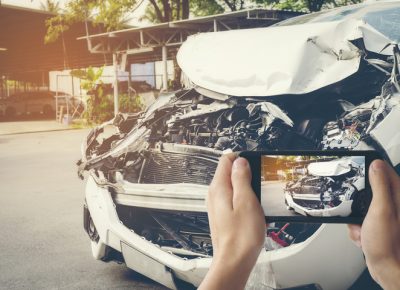
The average driver will be in about four car accidents over the course of their lifetime, according to auto industry experts. Six million car accidents occur every year, one in three, involves personal injury to the driver or passengers in the vehicle. It is important to know what to do to protect yourself when you have been involved in a car accident. Here is a list of the 8 things to do when you been involved in a car accident:
When Involved in Car Accidents, FIRST Stop.
If you are ever involved in an accident, even one that is minor, you must stop. Never drive away from the scene.
When Involved in Car Accidents, SECOND Protect Yourself.
Make sure to keep yourself safe at the scene of the accident. Set up flares, put your flashers on and if it is dark keep your lights on.
When Involved in Car Accidents, THIRD Call the Police.
Even if there are no injuries, you should report the accident to the police. Even if the accident seems minor consider the following: you may not notice all of the damage to your car immediately; the other may make false claims about the car accident later; the other party may admit fault to you but change his mind as time passes. If the police can’t come to the scene of the accident, you can go to the nearest police station and complete a report yourself. You must do this within 10 days after the accident. Often you will need the report to file a claim with your insurance company.
When Involved in Car Accidents, FOURTH Take Pictures and/or Video.
If you have your cell phone with you, you have the perfect recording device. Take pictures of the vehicles if the damage is visible. Record the conversation that you have with the other driver because they may admit that they were at fault. Keep in mind, it is not necessary to be holding the camera so that they know you are recording, you could even have it in a bag set on record. Before starting the recording, state their name and your name. This is important.
When Involved in Car Accidents, FIFTH Exchange Information.
Usually, the police will arrive on the scene and as part of their investigation will obtain this information. If for some reason police do not arrive to the accident scene, it is important for you to get the name, address and telephone number of everyone involved in the accident including drivers and passengers. Additionally, you should l exchange insurance information. If there are any witnesses to the accident, try to gather contact information from them. It will be helpful for your attorney as they handle your case. Do not let the other driver take a photo of your driver license.
When Involved in Car Accidents, SIXTH Report the Accident.
You should call your insurance company to report the accident as soon as possible. Your insurance company may try to make a quick cash offer, but do not accept any settlement before contacting your attorney.
When Involved in Car Accidents, SEVENTH Seek Medical Attention As Soon As Possible.
If you have been injured, not matter how small you deem the injury to be, you should seek medical attention at an urgent care center or your local ER.
When Involved in Car Accidents, FINALLY Contact an Attorney.
An attorney will have your best interest in mind, will protect your rights and will ensure that you receive the compensation you deserve.
If you or a family member has been injured in a car accident, due to the negligence of others, call us at 609-645-1111 to learn more. We would be happy to arrange for a confidential free consultation.
Trips, Slips and Falls: Things You Need to Know
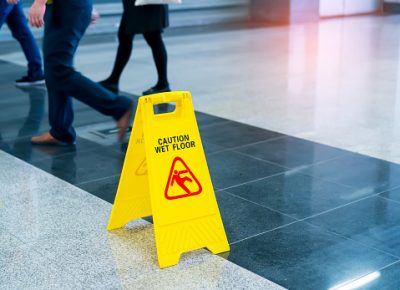
Trips, slips and falls can happen just about anywhere. You might slip on an icy step walking into your neighbor’s house or as you walk into the store to do the grocery shopping. There may be many reasons that you have an accident, but most often slips and falls occur because a property owner has not kept their property safe from dangerous conditions.
Property owners, including businesses and government buildings, have a responsibility to keep their properties maintained so that they are safe. Premises liability holds owners liable for injuries that may occur on their properties. If a property owner doesn’t maintain their property that put everyone in danger. Here are some common causes of slips, trips and falls:
- Dangerous walkways, flooring or failure to remove or treat snow or ice
- Poorly maintained parking lots
- Negligent or inadequate security
- Improper lighting
- Unsafe stairs, railings or balconies
If you experience slips and falls on someone else’s property, here is what you need to do:
- TAKE PHOTOS. The first and most important thing that you can do after you have fallen or been injured is to take pictures of the dangerous condition. If you are unable to take pictures, have someone take pictures for you of the area the fall occurred.
- SEEK MEDICAL ATTENTION. If you have been injured, you should seek medical care as soon as possible. It is important to document your injuries.
- DO NOT DISCUSS YOUR INJURY WITH THE PROPERTY OWNER OR AN INSURANCE COMPANY. Other than reporting your injury to the property owner when it has occurred, there is no need to discuss it with them or an insurance company until you have consulted with an experienced personal injury attorney.
Determining whether the property owner is responsible
Just because you have fallen on someone else’s property, it may not necessarily mean that they are liable. Your attorney will understand the nuances and intricacies of premises liability once you consult them. If you have been injured from a slip, trip, or fall or other negligent property owner act, please give us a call today for a free, confidential consultation.
8 Myths About Flood Insurance
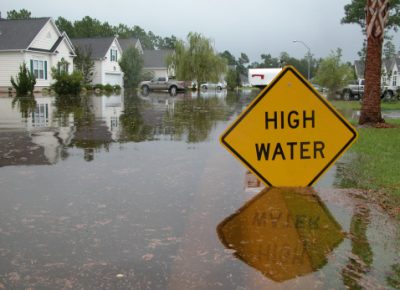
In 2018 alone, the tri-state area experienced record rainfalls. As the weather patterns become more unpredictable in all regions of the country, any place can become an area prone to flooding. Purchasing flood insurance can provide protection and give you peace of mind. Even when you don’t live in a high-risk area, you could face damage to your property due to flooding.
If you are considering buying flood insurance, here are 8 common myths that you should know:
MYTH #1: Flood insurance is available through your homeowner’s insurance.
FACT: Normally, homeowners insurance do not cover flood damage. But, you can purchase Federal flood insurance through an insurance agent or company. It will cost on the average about $700 a year.
MYTH #2: If my property floods, it wouldn’t be by much.
FACT: Just five inches of water can cause at over $25,000 worth of damage.
MYTH #3: You can’t buy flood insurance if you are located in a high-flood-risk area, by the ocean, or a renter.
FACT: You can buy National Flood insurance as long as your community participates in the NFIP. It was created in 1968 to make federally backed flood insurance available to property owners, renters, and businesses in eligible communities.
MYTH #4: Flood insurance isn’t necessary because you can get disaster assistance from FEMA
FACT: When you have flood insurance, you can be ensured that the policy will protect you from flood events that aren’t necessarily big enough to be declared a presidential disaster. In less than 50 percent of flooding events, Federal disaster declarations are made. If one is made, federal disaster assistance typically is in the form of a low-interest disaster loan, which must be repaid. Any grants that may be provided are not enough to cover all losses.
MYTH #5: You can’t buy flood insurance immediately before or during a flood.
FACT: You can purchase National Flood Insurance at any time. Typically, there is a 30-day waiting period after you buy flood insurance before the policy is effective. The policy does not cover a loss in progress, which is defined as a loss occurring as of midnight on the first day your policy goes into effect.
Myth #6: The NFIP does not offer basement coverage.
FACT: Structural elements and essential equipment in a basement are covered, although basement improvements such as finished walls and floors, and personal belongings in a basement are not The following items are covered under building coverage, as long as they are connected to a power source, if required, and installed in their functioning location:
- Sump pumps
- Well water tanks and pumps, cisterns, and the water in them
- Oil tanks and the oil in them, natural gas tanks and the gas in them
- Pumps and/or tanks used in conjunction with solar energy
- Furnaces, water heaters, air conditioners with solar energy
- Furnaces, water heaters, air conditioners, and heat pumps
- Electrical junction and circuit breakers boxes and required utility connections
- Foundation elements
- Stairways, staircases, elevators and dumbwaiters
- Unpainted drywall walls and ceilings, including fiberglass insulation
- Cleanup
- Sump pumps
Myth #7: Flood insurance will blow my budget.
FACT: Not necessarily, as stated in Myth #1, the average cost is $700 a year, but if you live in a low-risk area, the premiums are lower. Some policies can start at $112 per year.
Low-risk flood plain areas have a lower chance of flooding and, therefore, require lower premiums.
MYTH #8: The NFIP does not cover flooding from hurricanes, the overflow of rivers or tidal waters.
FACT: The NFIP defines covered flooding as a general and temporary condition during which the surface of normally dry land is partially or completely inundated by water. There must be at least two properties in the area or two or more acres in the community must be affected. Flooding can be caused by:
- The overflow of inland or tidal waters.
- The unusual and rapid accumulation or runoff of surface waters from any source, such as heavy rainfall.
- Mudslides, i.e., mudflows that could be described as a river of liquid and flowing mud.
- The collapse or destabilization of land along the shore of a lake or other body of water, resulting from erosion or the effect of waves




